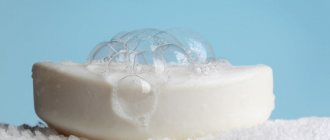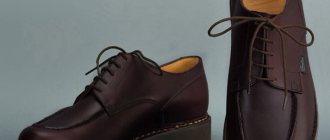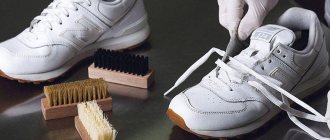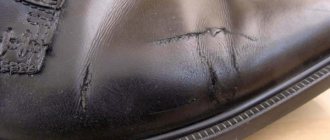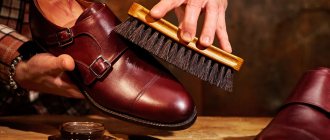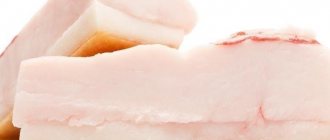Shoes have long ceased to be a part of the wardrobe, which should only provide comfort when walking and protection from the cold. What we put on our feet demonstrates our wealth, standard of living and inner peace better than any clothing or accessories. But even the most expensive ones need to be properly looked after. If we neglect this, then a pair of once-chic leather shoes in a short time can turn a lovely princess into an unkempt Cinderella, and a handsome prince into a sloppy commoner.
How to care for shoes - Basic rules
Let's start with everyday procedures. There are a few things you need to do regularly to keep your shoes in good condition.
First of all, when you put on your shoes, use a horn. This is a simple accessory that makes it easier to put on shoes without deforming the heel. This way the heel of your shoe will not lose its rigidity. Your shoes will thank you for it.
Before putting on your shoes, wipe them with a damp cotton cloth. You can also use a horsehair brush to remove dust that has coated the top of the shoe from previous wear.
Make it a habit to clean the tops and soles of your shoes from dust and dirt every time you get home before putting the shoe lasts in them and placing them on the drying rack. If you have time, let the boots dry for about 15 minutes before inserting the shoe molds into them.
Finally, use shoe bags. The accumulation of dust and dirt on shoes will dry out and damage the leather. A shoe bag or cotton cloth will prevent this. Especially store shoes that you rarely wear in bags.
By doing these simple steps you will extend the life of your shoes.
Features of the material
Lacquer products are made from a material based on natural or artificial leather, coated with a special composition consisting of polyurethane or polyvinyl chloride, nitrocellulose and linseed oil. Specially selected varnish components provide a mirror-smooth coating of the base, as a result of which the material acquires a beautiful glossy surface, which is undoubtedly an advantage. But it is the varnish film, being a very intricate part of the material, that creates difficulties in care and storage, and sometimes significantly reduces the service life of the product. Therefore, when caring for patent leather shoes, it is important to know what situations to avoid.
Patent leather shoes look very beautiful, but require careful care
What patent leather cannot tolerate
Factors that can ruin the patent leather coating of shoes:
- negative air temperatures. When frost occurs, cracks form on the varnish surface and the product loses its attractive appearance;
- the opposite problem is high temperatures and direct sunlight. Under the influence of these factors, the varnish melts and stretches. Do not dry patent leather shoes near heating devices or leave them on a hot area from the sun. The permissible temperature at which the varnish surface will not be damaged is from 0 to 25 ° C;
- Moisture entering the structure of the material disrupts its properties. The leather layer may be deformed, the varnish surface may change color (lightened or darkened areas will appear on the product). Therefore, it is not recommended to wash shoes with water or store them in areas with high humidity;
- abrasive products and materials will certainly damage the surface of the varnish coating, leaving scratches on it. Do not clean patent leather with brushes or hard sponges, or use powder or granular products;
- aggressive chemicals such as acetone, gasoline, solvents will cause dull spots to appear on the surface and ruin the appearance.
Factors that can worsen the condition of patent leather should also be taken into account when wearing shoes.
Video: what are patent leather shoes
Shoe care instructions - Polishing
You can find several tips on the Internet about “how to take care of your shoes” and especially “how to polish your shoes.” It is worth noting that this article is based on my own experience and is for guidance only. We recently wrote a detailed article on how to make glassage. Briefly, the instructions are as follows:
1. Use a brush to remove dust and dirt from your shoes.
2. Use the balm to restore and moisturize your skin. Apply the product with a soft cotton cloth and leave to dry for a couple of minutes. Then remove excess balm with a brush.
3. After this, we recommend using Pate de Luxe (wax from Saphir), water and a soft cotton napkin. Process the shoes layer by layer until you get the desired result.
About patent leather
A distinctive feature - a mirror shine - is given to a pair of natural or artificial leather by a special varnish. It is made from polyvinyl chloride (or polyurethane), linseed oil and nitrocellulose. It is because of this beauty that thrifty fashionistas step in patent leather shoes more carefully and consciously.
The glossy finish is quite vulnerable and sensitive to mechanical, chemical, and weather influences. On the mirror surface, settled road dust, water and dirt stains are more noticeable. And if these contaminants are not eliminated immediately, you can end up with more serious and difficult-to-remove defects in the form of cracks and cloudy areas.
When buying such shoes, it is better to immediately purchase soft microfiber cloths that absorb moisture and do not leave fibers on the treated surface, and take them with you when putting on shoes with varnish.
What should not be used to care for patent leather shoes?
Since patent leather shoes are very finicky, you cannot clean their surfaces with microfiber cloths, cotton pads, or soft flannel with force, so as not to damage the varnish coating.
In our case, neither cleaning sponges nor traditional shoe brushes are acceptable. All this equipment can scratch delicate varnish.
It is not permissible to use when washing:
- soap solutions, they are dangerous because they contain alkali;
- alcohol-containing products.
The listed preparations are more likely to fix dirt on the surface than to clean the shoes.
Carmina monks – from “killed” to “like new”
1. We recommend using Saphir Detacheur. Apply it to a cloth and wipe your shoes. Leave the pair to dry.
2. The skin is dry. Treat it with fat. We recommend Saphir Graisse. Mink oil in the composition helps restore moisture to shoes. Leave the shoes to dry for a couple of days. Brush it periodically.
3. To invigorate the skin after previous procedures, treat it with Saphir Renovateur balm. This will serve as a base for applying a soft cream. Then after a few minutes apply Saphir Pommadier cream.
Advantages of treatment at the ISC
Compared to other clinics in our country, the Innovative Vascular Center has undeniable advantages in the use of plastic surgery methods to treat vascular patients. In our clinic, the closure of skin wounds and trophic ulcers is carried out in a specialized department for the treatment of critical ischemia. Thus, wound treatment is carried out by surgeons, who ensure the restoration of blood circulation necessary for successful wound healing.
We are well aware of the course of wound processes in patients and we select for each case the required time and method of closing the trophic ulcer or wound. To prepare wounds for skin grafting, we use active wound surface preparation methods. Dressings and antibacterial drugs are prescribed taking into account the sensitivity of the wound microflora.
Thanks to innovative technologies, we are able to heal wounds that no other clinic in our country can handle!
The photo shows the process “before” and “after”
We hope that in the future you will be able to answer the question “how to care for your shoes.” And let us know what you think of the result.
Repairing damage
Being a fragile and vulnerable coating, the varnish film quite often undergoes various types of damage: scratches, chips, abrasions, etc. Any of these changes significantly affects the appearance, depriving the shoes of their spectacular stylish status. Unfortunately, it will not be possible to turn back time and restore the integrity of the varnish coating. But in most cases, defects can be skillfully disguised, which will undoubtedly have a positive effect on aesthetic characteristics and presentable appearance.
Nail polish is suitable for masking scratches and abrasions.
- Choose a polish that matches the color of your shoes and apply it to the scratch with gentle movements, trying not to go beyond the boundaries of the damaged area.
Nail polish is a great helper in masking shoe defects - Let the varnish dry and then polish the surface.
If the varnish film is damaged and part of it has moved away from the leather base, nail polish will also help correct the situation. In this case, you can use either a varnish that matches the tone of the shoes or a colorless one.
- Carefully move the damaged area of the varnish film to the side.
- Apply nail polish to the damaged area of the leather base and the back side of the peeled film.
- Press the varnish film onto the product. Use a dry cloth to press down.
- Wait for the varnish to dry.
Small cracks can be hidden using a matching eyeliner, soft colored pencil or felt-tip pen. To fix the problem you need to:
- Paint over the crack with a pencil and carefully shade the colored component using a dry cloth.
You can hide small cracks in the varnish using a felt-tip pen. - Polish your shoes with a soft cloth.
Preparing for treatment
For skin grafting to be successful, a number of conditions must be met. The human body must be stabilized in terms of blood and protein synthesis. It is necessary to stop the infectious process. Conditions for performing skin grafting must be local:
- Good bleeding of the wound edges, active juicy granulations.
- The wound is in the granulation stage (without signs of active infection or purulent inflammation).
- The wound must be well supplied with blood (blood circulation must first be restored).
- The wound must be kept free of dead tissue using physical and chemical methods.
General conditions for performing skin grafting:
- The protein level in the blood must be at least 60 g/liter.
- Hemoglobin level is at least 90 g/liter.
- The patient must be stabilized in general condition
Direct preparation for surgery involves shaving the skin graft site, catheterization of the bladder, and installation of an epidural catheter for anesthesia.
Prognosis after treatment method
If the operation is carried out according to indications, provided that the causes of necrosis and trophic ulcers are eliminated, then the results of skin grafting are very good. Correctly performed surgery is successful in 95% of cases. In the postoperative period, the transplanted skin is gradually replaced by its own epidermis, which is manifested in the appearance of small crusts, under which young skin is noticeable.
Autodermoplasty may be a definitive method of wound closure if the wound is not on a supporting surface or in the area of a large joint. In such places, young skin can be damaged under stress with the formation of trophic ulcers. For supporting and bone surfaces, it is better to use full-thickness skin grafting with flaps on a vascular pedicle.
Observation program after treatment method
The operating surgeon must observe the patient until the trophic ulcer or wound to which the skin was transplanted is completely epithelialized.
In the postoperative period, medications may be prescribed that reduce the process of scarring of the skin in the plastic area. These ointments (Kontratubeks) can be rubbed into the wound for 3-6 months and contribute to the formation of a soft, delicate scar.
The final outcome of a skin transplant operation depends on the course of the vascular disease that caused the formation of a trophic ulcer or necrotic wound. Therefore, the main observation is carried out on the results of the vascular stage of treatment.
